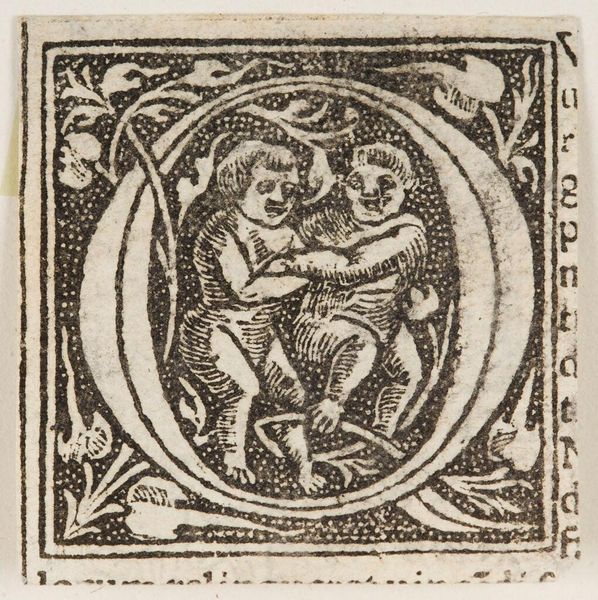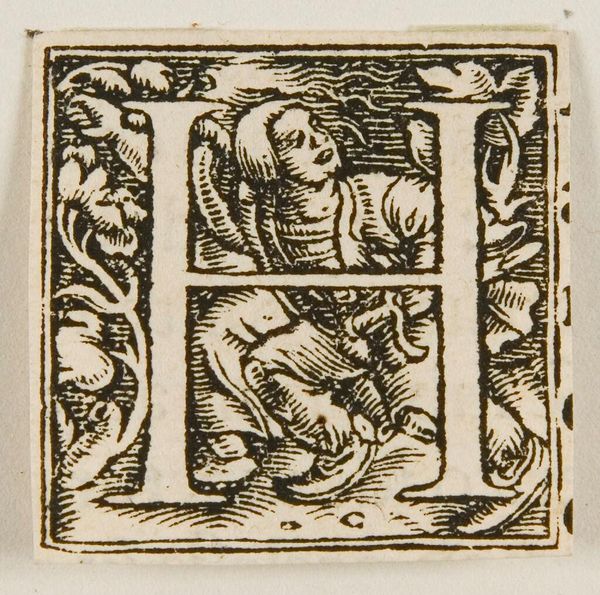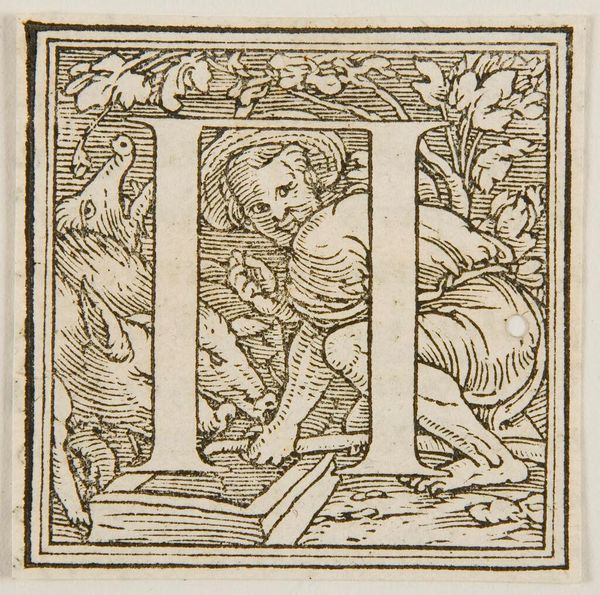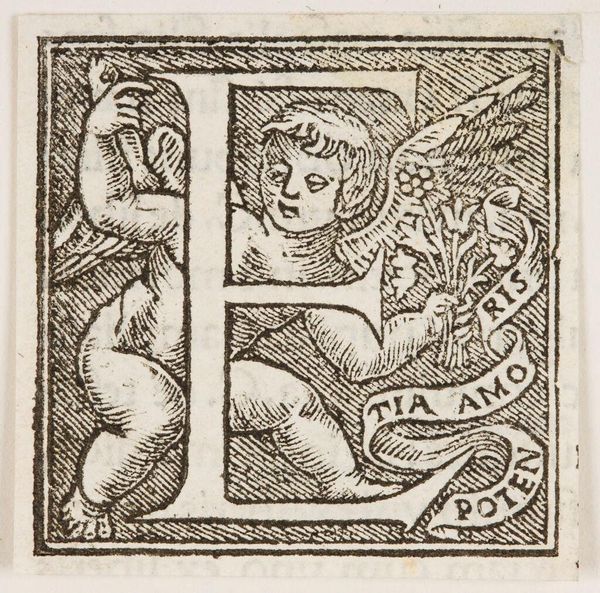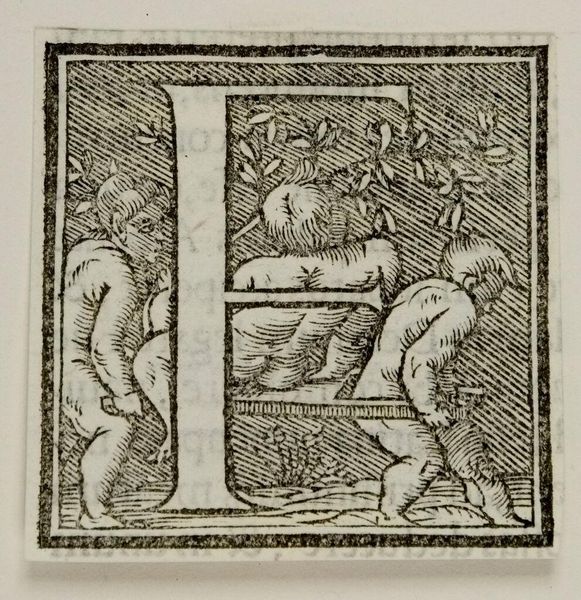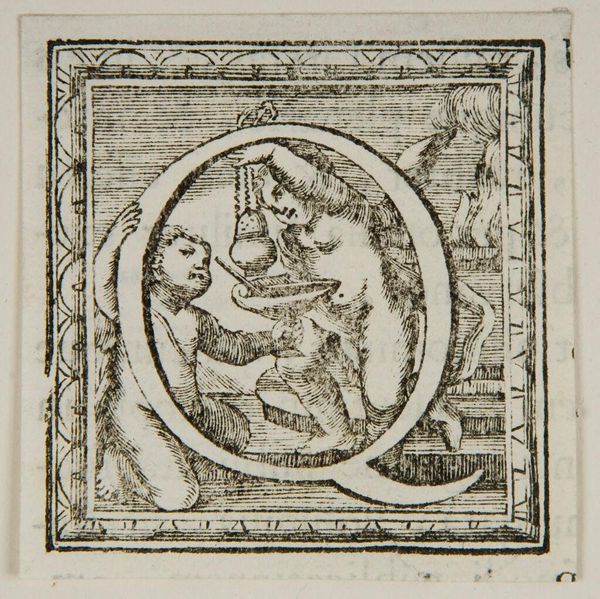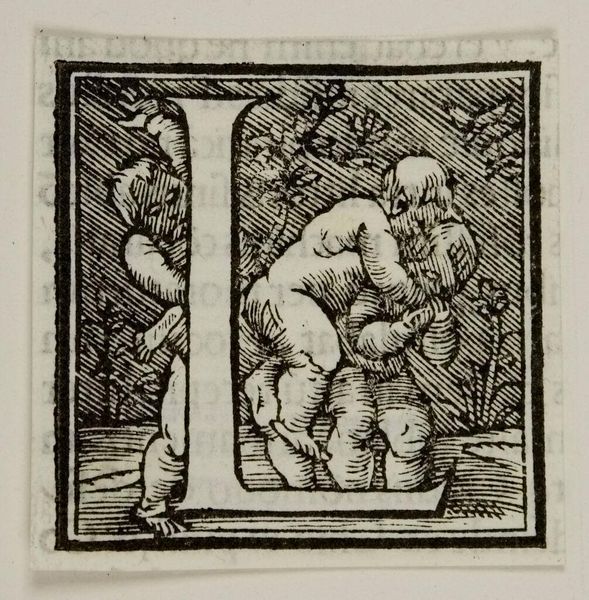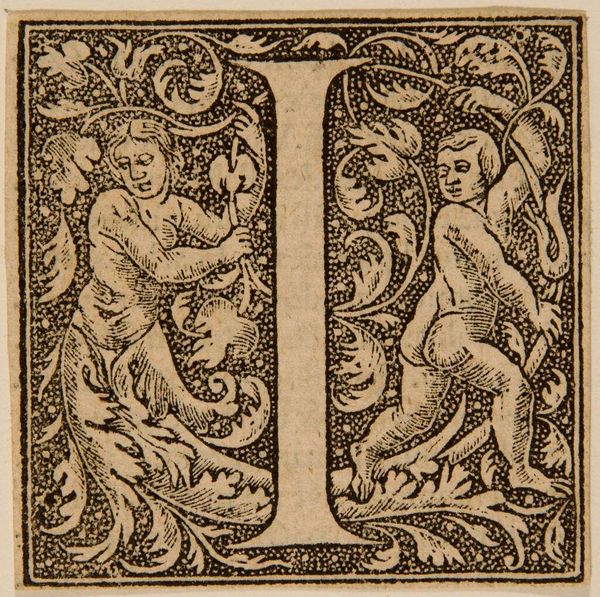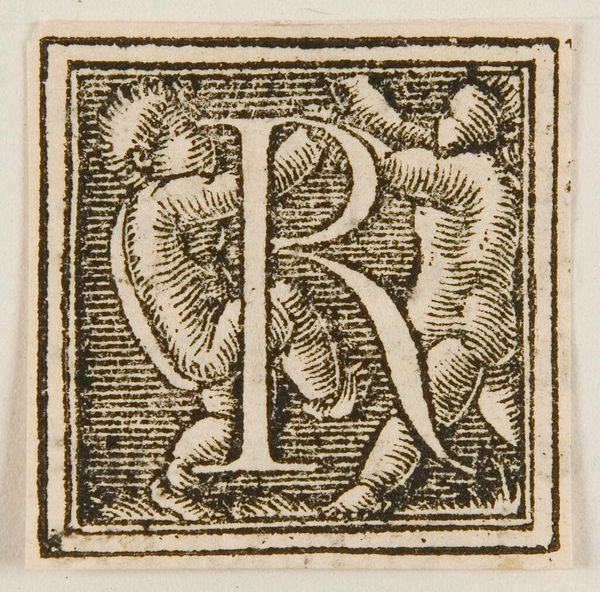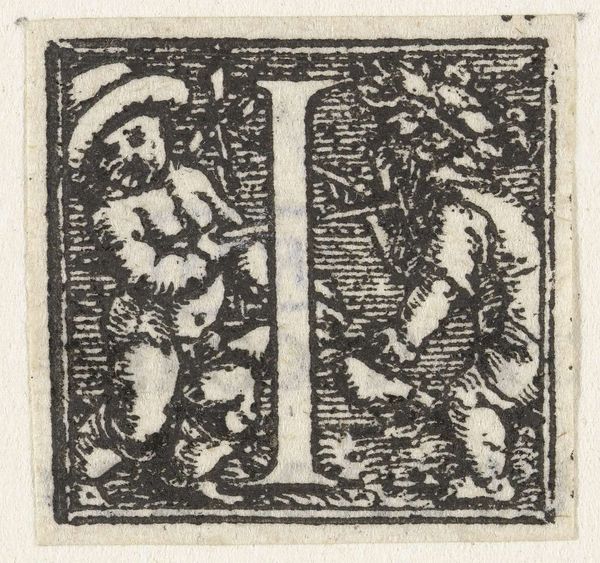
Copyright: CC0 1.0
Curator: This is "Letter E" by Hans Holbein the Younger. What strikes you about it? Editor: The strong contrasts immediately grab attention. There's a real tension between the dark, hatched areas and the almost luminous figures. Curator: Notice how the letter "E" itself becomes a stage for these cherubic figures. The children invoke associations of innocence. Editor: Definitely. And the "E" acts as both a frame and a structural element. The composition creates a kind of contained energy. Curator: The letter, as a symbol, also speaks to the broader tradition of illuminated manuscripts, where each letter held significant meaning. Editor: I see your point. Perhaps Holbein is suggesting the letter's inherent power as a building block of language and knowledge. Curator: Precisely. The image has a sense of playfulness, but the context of Renaissance humanism adds an intellectual dimension. Editor: I had not thought of that, I find new appreciation for the work now. Curator: These letters are so very important to what we know today. Editor: Absolutely.
Comments
No comments
Be the first to comment and join the conversation on the ultimate creative platform.
